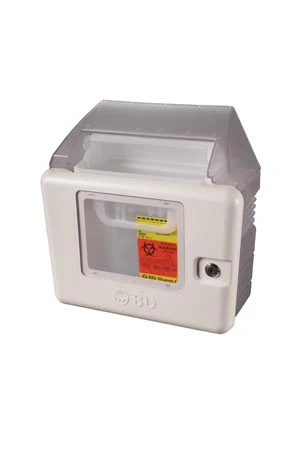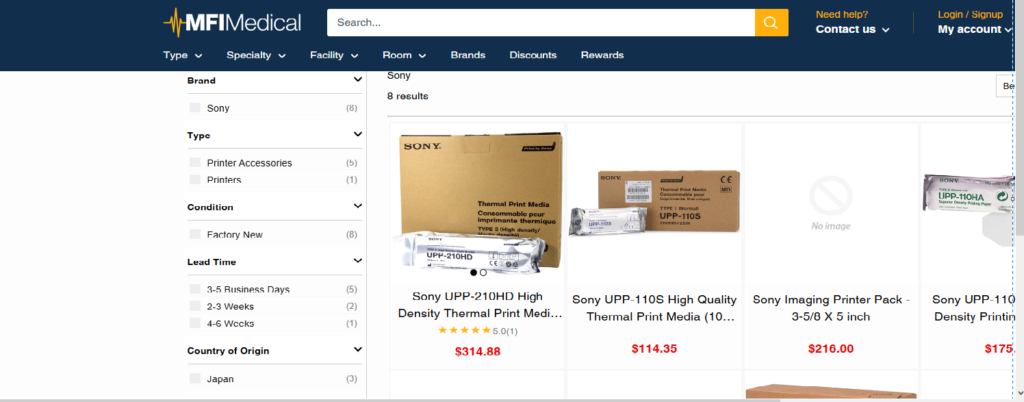Introduction to Storage Solutions
Table of Contents
Storage solutions play a crucial role in enhancing both personal and professional environments by ensuring that spaces are organized and efficient. In a world where clutter can easily accumulate, implementing effective storage strategies is essential for maximizing available space and reducing stress. Whether at home or in an office setting, the way in which items are stored can significantly impact productivity and overall well-being.

At its core, a storage solution is any method or system designed to keep items systematically arranged and easily accessible. This could range from simple storage boxes and shelves to sophisticated organizational systems that can adapt to a variety of needs. The fundamental goal of these solutions is to minimize chaos and promote a streamlined approach to handling belongings. When every item has a designated place, individuals can save time searching for things, allowing them to focus on more important tasks and responsibilities.

Moreover, effective organization can lead to a decrease in mental clutter. An orderly environment fosters a sense of calm and control, which can positively influence mood and stress levels. This is especially pertinent in professional settings, where a disorganized workspace can hinder creativity and efficiency. By prioritizing storage solutions, one can create an atmosphere that encourages productivity and innovation.
Ultimately, optimizing storage is not merely about aesthetics; it is about creating functional spaces that enhance daily life. Whether through innovative shelving systems, multifunctional furniture, or digital organization tools, the right storage solutions can lead to a tangible increase in efficiency. This guide aims to explore various strategies and methods for achieving optimal organization, providing valuable insights into how to effectively manage space.
Types of Storage Solutions
When it comes to managing space effectively, understanding the various types of storage solutions available is essential. These storage options can be broadly categorized into temporary and permanent solutions, each presenting its own set of advantages and disadvantages to suit different needs.
One popular temporary storage solution is portable storage units. These units provide a convenient and flexible option for individuals and businesses alike. They can be delivered to a location, allowing users to pack at their convenience, and then transported to another location or stored at a facility. The benefits of portable storage include flexibility and ease of access, although the potential downside includes rental costs that can accumulate over time.
Another temporary solution is self-storage facilities. These offer an extensive range of unit sizes, making them appealing for short-term and long-term storage needs. Users can rent a unit on a monthly basis, providing freedom to either declutter or store seasonal items. However, accessibility can sometimes be an issue, as hours of operation may be limited. Furthermore, costs can add up, especially if long-term storage is required.
On the other hand, permanent storage solutions such as built-in cabinetry offer long-term organization benefits. These solutions are often customized to fit specific spaces, maximizing storage potential while enhancing the aesthetic of a room. Built-in options can include shelves, drawers, and cabinets designed to store a variety of items. While the initial investment may be higher compared to temporary options, built-in cabinetry can add value to a home and provide a seamless organization system.
Lastly, modular shelving systems provide a versatile and adjustable storage solution. These units can be tailored to an individual’s needs and can adapt to changing storage requirements. They allow for easy reconfiguration and can be an effective way to maintain organized spaces.
Assessing Your Storage Needs
Determining the most effective storage solutions begins with a thorough assessment of your unique storage needs. Evaluating your available space is the first and most crucial step. Begin by measuring the areas where you intend to store items, whether it be a garage, attic, closet, or a dedicated storage room. Taking precise measurements will help identify what type of storage units or systems can fit optimally in the provided space. Additionally, consider the layout and accessibility of the storage area to ensure it facilitates easy access to stored items.https://asadmarket.com/wp-admin/post.php?post=935&action=edit#/
Next, take inventory of the quantity and type of items that require storage. Categorize items based on their dimensions, weight, and usage frequency. For example, seasonal items such as holiday decorations may require less frequent access, allowing for storage higher up or in less accessible areas. In contrast, items that are used regularly should be stored in more easily reachable locations. This approach prioritizes efficiency and ensures that items are organized in a manner that aligns with your lifestyle and access needs.
Furthermore, it is essential to consider the potential for future storage requirements. As your circumstances change—be it due to moving, downsizing, or accumulating new possessions—it may be necessary to reassess your storage needs periodically. Planning for flexibility in your storage solutions will help address potential challenges that arise over time. By systematically evaluating your available space, categorizing the items to be stored, and planning accordingly, you will gain valuable insights into the best storage solutions to maintain organization and maximize space effectively.
Innovative Storage Solutions for Small Spaces
In today’s fast-paced urban environment, living in small spaces has become increasingly common. Therefore, innovative storage solutions are essential for maximizing organization and efficiency within these limited areas. Creative approaches to storage can help individuals and families maintain a clutter-free environment while optimizing every square inch of available space.
One of the most effective strategies is the use of multi-functional furniture. These are pieces designed to serve multiple purposes, which is particularly valuable in small homes. For instance, a sofa bed can provide both seating during the day and a comfortable sleeping area at night, eliminating the need for a separate guest room. Ottomans with hidden storage compartments can offer functional seating while discreetly housing books, blankets, or toys. Dining tables that can extend or fold away offer flexibility while saving space when not in use.
Vertical storage techniques are another crucial aspect of maximizing limited areas. Shelves that reach towards the ceiling can utilize otherwise wasted overhead space, allowing additional storage without sacrificing floor area. Wall-mounted units and pegboards can also keep items neatly stored and easily accessible, while providing a decorative element to the space. In kitchens, magnetic strips for knives or spice jars can minimize countertop clutter, while in bathrooms, over-the-toilet shelving can fill empty walls with much-needed storage.

Additionally, incorporating under-bed storage solutions, such as bins or drawers, can dramatically increase available room for essentials. Using clear containers or labeled storage boxes enables quick identification of items, promoting organization in tight spaces. A little creativity can lead to strikingly effective solutions. Through the implementation of these innovative storage methods, one can transform cramped living quarters into organized, inviting spaces that function efficiently and comfortably.
Organizational Tools and Techniques
In any effort to maximize space and organization, the implementation of effective organizational tools and techniques is paramount. These tools not only help in creating a neat environment but also significantly enhance the efficiency of everyday activities. One of the simplest yet most impactful tools is labeling. Labels provide clear and concise information about the contents of bins, drawers, or shelves, significantly reducing the time spent searching for items. By utilizing waterproof and tear-resistant labels, one can ensure longevity and maintain visibility for essential items even in challenging environments.
Bins and containers also play a crucial role in organization. Available in various sizes and shapes, they can help categorize items based on their use or frequency of access. Transparent bins are particularly beneficial as they allow for easy visibility of contents, helping to eliminate the clutter that often accumulates in storage spaces. Additionally, integrating stacking bins can optimize vertical space, crucial in smaller areas.
Another efficient organizational technique involves the use of shelving systems. Utilizing wall space by installing shelves can transform underutilized areas into practical storage opportunities. Adjustable shelving offers versatility, allowing one to adapt the layout according to changing needs. Furthermore, floating shelves can add an aesthetic appeal while providing functional storage.
In today’s digital age, maintaining a digital inventory list serves as a modern method for keeping track of stored items. Applications and software designed for inventory management can help monitor what is available and what needs restocking. By consistently updating this list, individuals can avoid unnecessary purchases and keep their storage areas organized.
Employing these organizational tools and techniques is vital for promoting an orderly environment. By implementing a combination of labels, bins, shelving systems, and digital solutions, one can create a streamlined space that fulfills both functional and aesthetic needs, thereby enhancing overall organization.
Common Storage Mistakes to Avoid
When it comes to storage solutions, both individuals and businesses can encounter several common pitfalls that hinder optimal organization and efficiency. One prevalent mistake is overcrowding storage spaces. Many people tend to cram items into available areas, believing that maximizing space is synonymous with effective storage. However, this approach often leads to chaos, making it difficult to locate items when needed. Overcrowded areas can also cause damage to items and increase the time spent searching for specific objects. Instead, implement a system that allows for sufficient space between items to promote better visibility and access.
Another frequent error is improper classification of stored items. Failing to develop a logical categorization system can result in confusion and disorganization. It is essential to classify items based on their type, use, or frequency of access. For instance, storing seasonal items in a less accessible location can create unnecessary inconvenience, especially during transitions. By adopting a clear classification strategy—such as grouping similar items together—you can streamline the organization process, making retrieval much more efficient.
Additionally, neglecting the importance of regular decluttering is a critical mistake that many individuals and businesses make. Accumulating items over time without addressing the need to remove unnecessary or outdated things can lead to overflowing storage. To avoid this, schedule periodic reviews of stored items to evaluate their relevance and necessity. This practice not only helps maintain a clean and organized space but also encourages mindful consumption, as it prompts reflection on what items are truly needed. Overall, recognizing and avoiding these storage mistakes can lead to better utilization of space and improved organizational practices.
Seasonal Storage Tips
Effective seasonal storage is essential for maximizing organizational efficiency in any space. It allows individuals to optimize their storage capabilities by tailoring their approach to varying needs throughout the year. When it comes to storing holiday decorations, a well-thought-out strategy can help preserve items while minimizing clutter. Decorative items should be categorized and packed carefully, utilizing clear bins for visibility and labeling to facilitate easy retrieval. Wrapping fragile ornaments in tissue paper and using dividers in boxes can further protect these items.

In addition to holiday decor, managing seasonal clothing is another crucial aspect of effective storage solutions. Clothing items that are not currently in use, such as winter coats or summer swimsuits, can be packed away to create more space. Vacuum-sealed bags are a viable option for long-term storage, which reduces the volume significantly and protects against dust and pests. Seasonal shoes and accessories should also be stored in a manner that is easily accessible, ensuring they can be swapped in and out as needed.
Outdoor gear also plays a significant role in seasonal storage. Items such as gardening tools, sports equipment, and camping supplies can take up considerable space. Establishing a dedicated area in a garage or shed for these items can help keep them organized and protected from the elements. Implementing shelving units or wall-mounted systems can enhance accessibility while also preventing damage to the gear. Moreover, it’s essential to periodically assess these items to declutter and remove anything that’s no longer needed.
By strategically adjusting storage practices according to seasonal changes, individuals can maximize their available space. This yearly routine not only promotes organization but also ensures that every item is stored in a manner that maintains its quality, making retrieval straightforward when the season calls for it.
Sustainable Storage Solutions
In recent years, the push for sustainable practices has gained immense momentum, leading to innovative approaches in storage solutions. Utilizing environmentally friendly storage options not only enhances organization but also contributes positively to the planet. One primary aspect of sustainable storage is the use of recycled materials. Products made from recycled plastics, paper, or metals minimize the demand for new raw materials, thereby reducing waste and energy consumption. For instance, storage bins crafted from post-consumer recycled plastics effectively serve their function while mitigating environmental impact.

Moreover, opting for furniture and storage solutions made from sustainably sourced wood can play a significant role in environmental conservation. Companies that engage in responsible forestry practices ensure that their products not only support economic growth but also protect ecosystems and wildlife habitats. By selecting such options, consumers can make a conscious choice to foster sustainability while achieving effective space organization at home or in the office.
In conjunction with the materials used, sustainable storage practices also involve encouraging a decluttering mindset. By maintaining a minimalist approach, individuals can significantly reduce their storage needs and, consequently, their environmental footprint. Digital solutions for documents and photos, for instance, can drastically cut down the need for paper storage, supporting the vision of a paperless future.
The benefits of choosing eco-conscious storage solutions extend beyond reducing carbon footprints; they often come with a more aesthetic appeal. Many organizations are prioritizing design alongside functionality, creating visually pleasing storage options that seamlessly integrate into modern living spaces. As such, adopting sustainable storage solutions addresses both environmental concerns and personal style preferences, ultimately promoting a balanced approach towards consumption and organization.
Conclusion and Call to Action
In reviewing various storage solutions to maximize space and enhance organization, several key takeaways emerge. The importance of decluttering is fundamental; by removing unnecessary items, one can significantly optimize available space. Once decluttering is achieved, implementing effective storage strategies—such as utilizing vertical space, incorporating clear storage bins, and employing multifunctional furniture—can transform an area from chaotic to organized. Each of these solutions not only contributes to a more efficient use of space but also helps maintain a sense of order within a home or office environment.
Moreover, it is essential to approach organization as an ongoing process rather than a one-time task. This mindset allows for adaptability; as needs and lifestyles evolve, so too can the chosen storage solutions. Start small—dedicate time to organizing a single drawer, cabinet, or shelf. Such manageable tasks can yield immediate results, encouraging continued efforts to improve storage and organization. The satisfaction derived from these small victories can motivate further action in larger areas of a living or working space.
As you embark on this journey of optimizing storage, consider creating a plan that outlines the steps needed to achieve your goals. Set realistic timelines and celebrate milestones as you progress. By taking such gradual steps, you will not only enhance the functionality of your environment but also cultivate a habit of organization that can lead to lasting change. Embrace the challenge of maximizing space, and take the first step today towards a more organized and efficient living or working environment. Your future self will thank you for it.
Pros
- Start Small and Focused: Begin by organizing one area at a time, such as a single drawer or closet, to prevent feeling overwhelmed.
- Declutter Regularly: Periodically assess your belongings and remove items you no longer need or use, freeing up valuable space.
- Utilize Vertical Space: Install shelves, hooks, or cabinets on walls to maximize storage without sacrificing floor space.
- Label Storage Containers: Clearly labeling boxes and bins helps quickly identify contents, making retrieval more efficient.
- Use Clear Containers: Transparent bins allow you to see what’s inside without opening them, simplifying the organization process.
- Incorporate Drawer Dividers: Dividers keep items separated and neatly arranged, especially in drawers containing small items.
- Implement Overhead Storage: Ceiling-mounted shelves or racks can s
Cons
- Overemphasis on Aesthetics Over Functionality: Prioritizing visual appeal, such as color-coding systems, can sometimes compromise practicality, making maintenance more challenging.
- Inappropriate Storage Solutions: Utilizing storage methods unsuitable for specific items or environments, like storing delicate belongings in attics or basements prone to extreme conditions, can result in damage.
- Complex Organizational Systems: Implementing overly intricate systems, such as micro-sorting into numerous specific categories, can be difficult to maintain and may lead to increased clutter over time.
- Inadequate Consideration of Environmental Factors: Neglecting elements like humidity, temperature fluctuations, and pest control in storage areas can lead to deterioration of stored items.
- Misleading Storage Solutions: Some popular storage options, like woven baskets or asymmetrical shelving, may appear effective but can actually contribute to clutter if not used thoughtfully.











